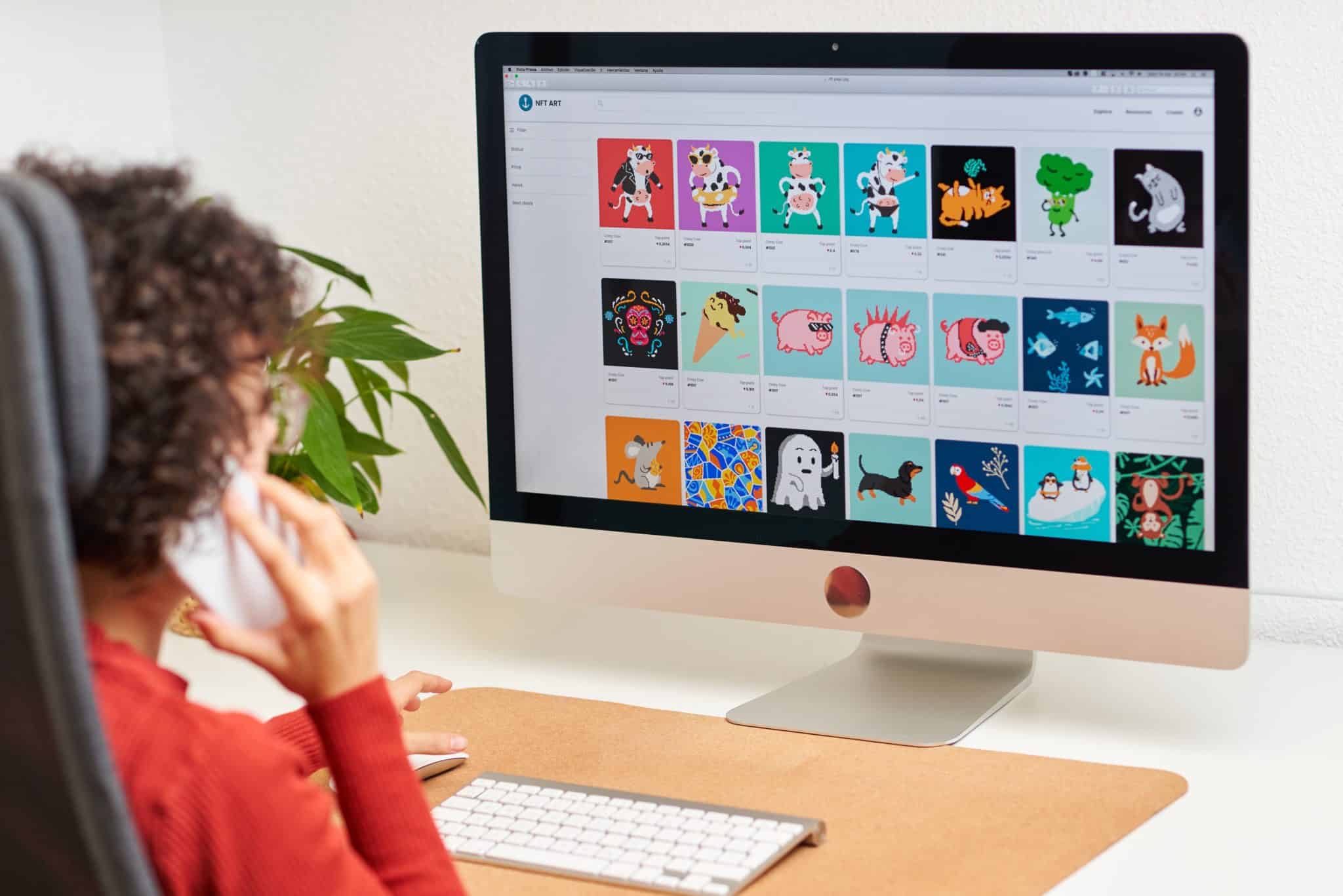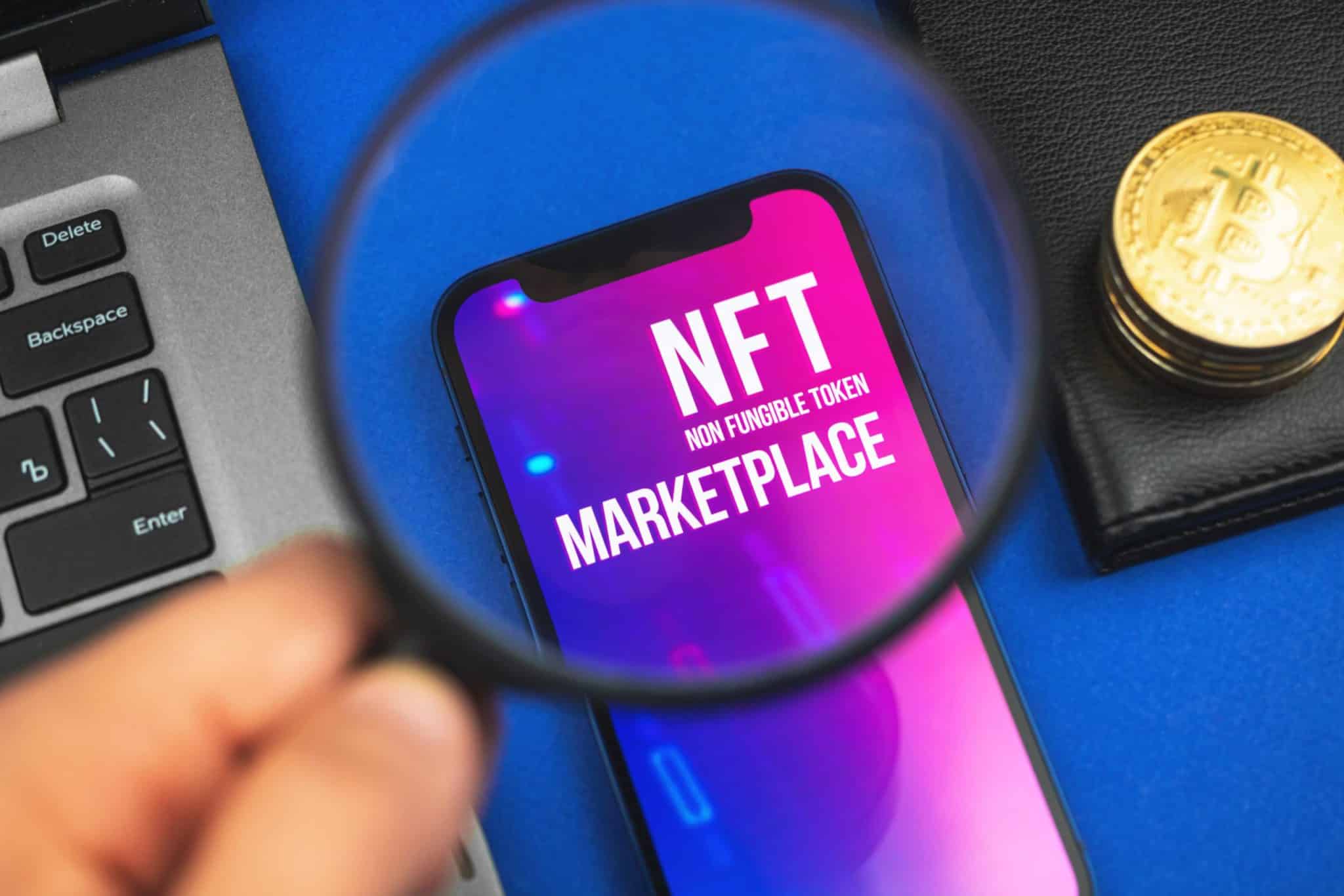The NFT marketplace business model is quickly gaining in popularity. It allows for the sale and purchase of non-fungible tokens (NFTs) in a secure and trustless environment.
This article will discuss how the NFT marketplace business model works and explain its benefits to buyers and sellers.
NFT Business Model
The NFT business model uses blockchain technology to create and manage unique digital assets. These assets, known as non-fungible tokens (NFTs), can represent various items, from digital artwork to collectible cards.
The essential advantage of NFTs is that they can be traded and exchanged securely and transparently on a blockchain network. This allows for a much more liquid and efficient market for digital assets than traditional methods like centralized exchanges. Here are some ways NFTs can benefit your business.
Another advantage of the NFT business model is that it allows content creators and owners to control the distribution and sale of their digital assets directly.
This gives them more power and control over their work and creates a more equitable marketplace where everyone has an equal opportunity to participate.
Digital Collectables
One of the most popular use cases for NFTs is digital collectibles. These can take the form of anything from virtual pets to digital artworks.
The key benefit of digital collectibles is that they can be stored securely on a blockchain and traded quickly with other collectors. This creates a vibrant and active market for these assets, which can be a great source of income for creators and owners.
Another advantage of digital collectibles is that they are often unique, making them more valuable to collectors. This uniqueness also adds an element of fun and excitement to the collecting process, as each item is like a one-of-a-kind piece of art.
Strong Communities
One of the most critical aspects of the NFT marketplace business model is the development of solid communities around NFTs.
These communities provide a space for collectors and creators to connect, trade, and offer support and advice to new members.
The development of these communities is essential for the long-term success of the NFT marketplace business model. They provide a way for new users to discover NFTs and also help to promote and grow the market for these assets.
Secure Personal Information
When it comes to buying and selling digital assets like NFTs, security is of the utmost importance. The NFT marketplace requires all users to provide personal information to protect buyers and sellers from scams and fraudulent behavior.
This information can verify users’ identities and ensure they act in good faith.
The NFT Marketplace takes many steps to protect users’ personal information, such as:
- Employing several fraud prevention measures to help protect buyers and sellers from scams and other malicious behavior
- Encrypting all data using state-of-the-art security protocols
- Not storing any passwords or sensitive information on its servers
These measures include automated fraud detection systems and human moderators who review all transactions for suspicious activity. By taking these precautions, the NFT Marketplace aims to create a safe and secure environment for digital asset trading.
Proven Track Records
NFT marketplaces require a proven track record to ensure that the buyers and sellers are legitimate and that the marketplace is not a scam.
Most marketplaces require verification in order to participate, such as providing a government-issued ID or linking an account to a trusted social media platform. This helps to create a safe and secure environment for buyers and sellers to exchange goods and services.
How to Start an NFT Marketplace
Now that you know how NFT marketplaces work, you may wonder how to start your marketplace.
To start an NFT marketplace, you’ll need to:
- Choose a blockchain network
- Pick your token standards
- Build a Nice Website

Choose a Blockchain Network
When choosing a blockchain network for launching an NFT marketplace, you’ll want to consider the following:
- The scalability of the network: Can the network handle a large number of transactions?
- The fees associated with using the network: Are the prices reasonable?
- The security of the network: Is the network secure and resistant to hacks?
It is important to choose the right blockchain network and to understand the limitations of blockchain.
Pick Your Token Standards
When picking your token standards, you’ll want to ensure that they are ones the community will widely accept.
For example, ERC20 is one of the most popular token standards. This standard, developed by Ethereum, is used for smart contracts on the blockchain. If you’re looking to issue a token that you can use on Ethereum-based platforms, then ERC20 is the standard you’ll want.
Build a Nice Website
A website is a crucial part of any business, and the NFT Marketplace is no different. It is essential to have a well-designed and user-friendly website to create a thriving marketplace.
The website should be easy to navigate and allow users to quickly find the information they want. It should also be visually appealing and showcase the NFT Marketplace’s products and services.
The website should also be updated regularly with new content and features to keep users engaged.
An example of an excellent website for NFTs is DraftKings. The DraftKings NFT marketplace is just as it sounds – a place for users to buy and sell NFTS. It has a simple interface which is important to help customers interact with your site. It also allows you to search for specific NFTs or browse by category.

How to Monetize an NFT Marketplace
There are several different ways to monetize an NFT marketplace. These include:
- Listing Fees
- Initial Fees
- Minting Fees
- Private Sales
- Bidding Charges
- Transaction Charges
Listing Fees
Listing fees are generally a set amount of money the seller pays to have their listing appear on the marketplace.
This fee helps to cover the costs of maintaining the marketplace and ensures that only high-quality listings are displayed. It also serves as a deterrent for spam listings, which can clutter up the marketplace and make it difficult for buyers to find what they’re looking for.
Initial Fees
Initial feels help to cover the costs of running the marketplace and ensure that the site can continue to operate.
In addition, they can also be a way for the site to make money by taking a commission on each transaction. This commission helps to offset the costs of running the marketplace and can be a valuable source of revenue for the site.
Minting Fees
NFT creators pay minting fees to create an NFT. These fees help cover the costs of the following:
- Creating and hosting the marketplace
- Developing new features
- Maintaining the platform’s security
Fees vary depending on the type of NFT that is created, but they are typically a small percentage of the total value of the asset.
Private Sales
Private sales allow users to sell their NFTs directly to other users without going through the marketplace.
Private sales can be a more efficient way to sell NFTs, as there is no need to wait to find a buyer in the marketplace.
You can also use private sales to sell rare or unique NFTs that may not be available on the marketplace.
Bidding Charges
When a seller puts an NFT up for auction, they can set a starting price and a bidding increment. Buyers then submit bids by specifying the amount they are willing to pay and the number of tokens they are willing to spend.
If the offer is higher than the current highest bid, then the bidder’s tokens are spent, and their bid becomes the new high bid.
When the auction ends, the winner is the bidder who has spent the most tokens. In addition, the seller is charged a percentage of the final sale price as a bidding fee.
Transaction Charges
Transaction charges are one of the key ways that marketplaces can monetize their services. By charging a small fee for each transaction, the marketplace can generate revenue to cover its costs and make a profit.
This fee is typically a small percentage of the total transaction value and is generally lower than the fees charged by traditional financial institutions.
Conclusion
The NFT marketplace business model is a new and exciting way to trade digital assets. It offers many benefits to both buyers and sellers, including security, transparency, control, and liquidity.
The key to its success will be the development of solid communities around NFTs. These communities will help promote and grow the market for these assets and ensure that the NFT marketplace business model remains healthy and active. Thanks for reading!
If you have any questions, let us know in the comments!

